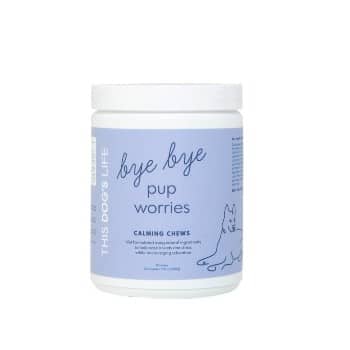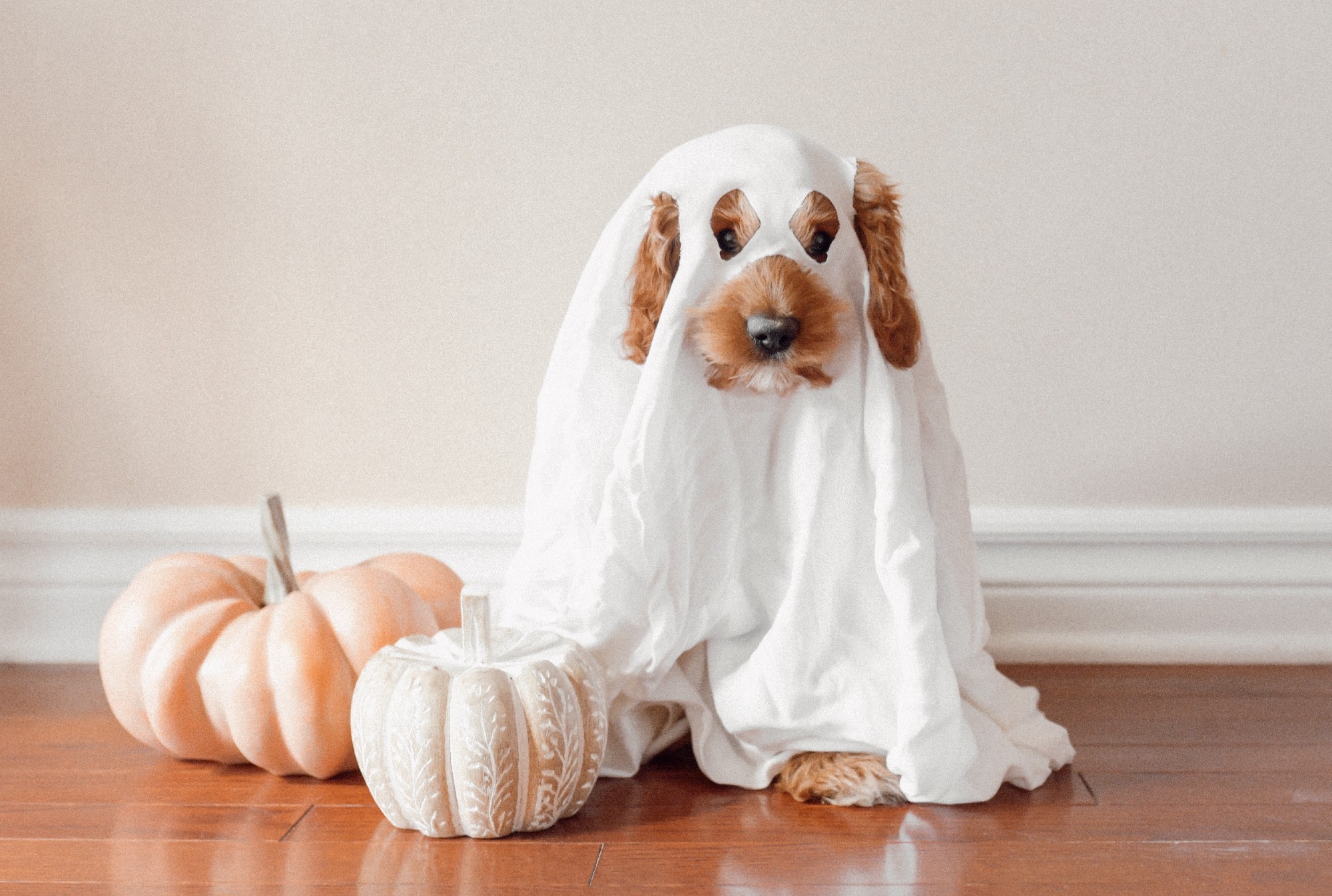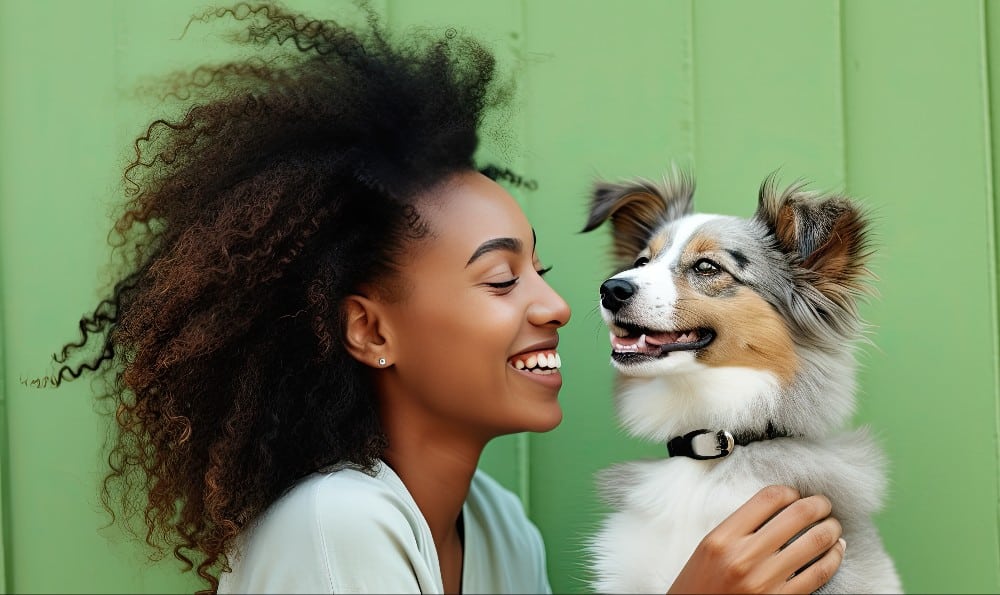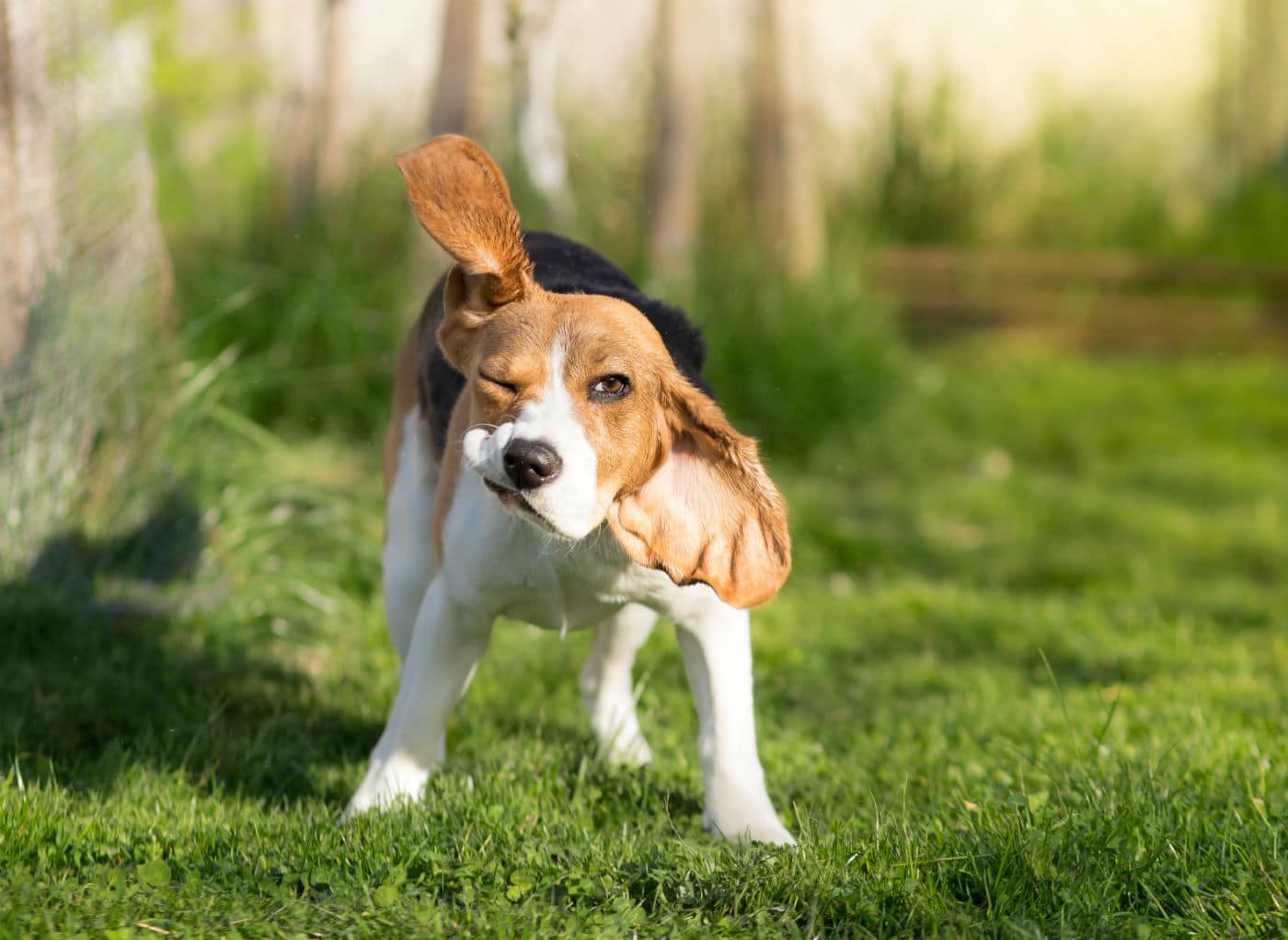The constant flurry of costumed kiddos at your front door, fall activities, and festive décor may be enjoyable, but not such a treat for your pooch.
Strange costumes, loud noises, and large numbers of new faces coming to your home could make your dog uneasy. Moreover, chocolate candies and spooky lawn decorations can put your pup in harm’s way.
To help your dog safely get through Halloween, you need to have some tricks up your sleeve to ensure October 31st is a treat for everyone, including your canine companion.
Here are five Halloween safety tips to keep your dog healthy and happy.
1. Keep an Eye Out for Candy Culprits
When it comes to keeping your dog safe on Halloween, one of the most important precautions you can take is to keep all toxic treats out of his reach. While pets shouldn’t ever be munching on any Halloween goodies, some candies are particularly hazardous to dogs, including:
- Chocolate: Dogs have a tough time digesting theobromine, a chemical compound found in chocolate. This compound makes these sweets toxic to your pet.
- Caramel apples: The seeds found in many caramel apples contain a type of cyanide, which can make your dog really sick. (Plus caramel is extremely high in sugar.)
- Sugar-free candy: Xylitol, a type of sweetener found in most sugar-free candies, is toxic to dogs and can cause hypoglycemia.
- Macadamia nuts: The high-fat content in these nuts can drastically disrupt your dog’s digestion.
- Candy corn: This traditional Halloween treat contains large amounts of glucose and sucrose, which can cause severe vomiting and diarrhea in dogs.
Store all candy for trick-or-treaters in a deep bowl and place it in a closed cabinet or on a high, sturdy table, ensuring your dog can’t grab them. If your pet consumes any toxic Halloween candy, contact your vet right away or call Animal Poison Control at 1-888-426-4435. Symptoms of toxicity include vomiting, diarrhea, muscle tremors, and increased heart rates.
2. Pet Costume Contests 101
One of the most enjoyable things about Halloween is dressing your dog up in cute costumes! However, before entering your dapper dog in a costume contest, make sure he’s comfortable and confident in his outfit, otherwise, it could completely stress him out. This means desensitizing your dog to his Halloween getup weeks before the costume contest.
Put one piece of the costume on your dog at a time. Give him a high-value treat and then take that particular piece off. Gradually increase the number of pieces you put on your pup. Once your dog is comfy wearing the entire outfit, slowly increase the amounts of time he spends in his costume. Try pairing these sessions with activities your dog enjoys, such as mealtime or playtime.
When choosing a costume for your dog, find something that fits properly and isn’t too restrictive. Some dogs might be bothered by hoods, masks, or sleeves. If your dog shows any signs of stress, take the outfit off.
3. Prevent a Runaway Dog
Continuous foot traffic at your front door on Halloween night gives your dog ample opportunity to make a run for it. If you can’t keep your dog barricaded in another room behind a gate or closed door, keep him on a leash and under control.

SHOP NOW
To prevent excessive barking due to numerous doorbell rings, make sure your dog is occupied. Turn on some calming music, provide him with plenty of interactive toys, spray calming pheromones in the room where he’ll be staying, or consider giving him a natural calming supplement.
4. Develop Safe Leash Habits
Is your dog joining in on some trick-or-treating action with the family? In order to keep your pet safe, have him wear an LED or reflective harness and collar. This makes him easily visible to other trick-or-treaters and motorists.
Don’t use a retractable leash on Halloween night. The thin leash is hard for others to see, creating a tripping hazard. Moreover, if your dog gets spooked and takes off, a retractable leash can easily break. Use a thick, brightly-colored leash instead.
Make sure your pet walks politely on a leash. Don’t allow him to drag you down the street or jump on others. And never bring your dog up to front doors. This can be stressful for him and embarrassing for you if your dog tries to jump on the homeowner or another pet.
5. Be Mindful of Decorations
Spooky spiderwebs, bloody body parts, and ghoulish ghosts all make fun Halloween décor; however, some decorations can be dangerous to your dog.
Never keep small decorations where your dog can reach them. He might mistake one for a chew toy and eat it.
Jack-o-Lanterns and festive fall foliage, such as mums, are both toxic to dogs. Never leave these items in places that are accessible to your pet. Additionally, never keep lit pumpkins or candles around your dog to reduce the risk of burns.
Keep all electric and battery-powered decorations, such as fog machines and lanterns, away from your pet. If your dog chews on an electrical cord, he could get shocked or burned. Batteries may also cause chemical burns or intestinal blockages if chewed or swallowed.
Keep loud, animatronics outside to not spook or stress your pet.
Halloween can be a fun experience for both you and your dog, but you just need to be prepared to keep your best friend safe and sound.



















